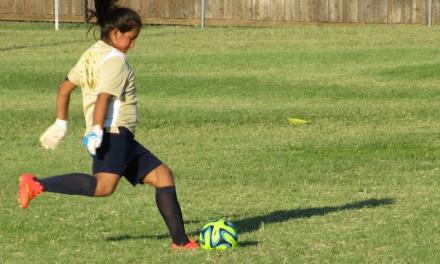How does one go about raising the numeracy skills in youth who, for a great majority, want little to nothing to do with math exercises? The solution may be found through an integration of sports and numeracy skills.
Sports are an exercise in mathematics
For example, when playing football (either UK or American) there is a very high level of maths involved with the progress of the game.
From the basic tallying of the score in traditional football to the calculation of yards for a first down in American Football, addition and subtraction are at the forefront.
Teachers can utilise the basic addition and subtraction in these sports to raise the numeracy skills of students. For example, instead of displaying the teams’ scores, have the students keep a mental tally of the goals.
Additionally, having students record their statistics during the game increases the students’ ability to calculate averages, division, addition, subtraction, and other numeracy skills.
Teaching fractions and complex formulas
Nearly every sport has a dedicated slice of time. Quarters, halves, innings, sets, are all based upon fractions. Having students understand these fractions is an easy way to boost their numeracy skills.
For example: If a student is watching a rugby match then they will learn about halves. Now each half is divided into 40 minutes. If you divide the 40 minutes into 10 minute segments, then you could easily teach the person watching the sport fractions of 1/8 and 1/4 by relating it to certain plays and scoring.
Identifying various shapes on a baseball, rugby, or football field can also be a means of teaching geometry as well as complex formulas. To increase the numeracy of the student, calculation of the area of various geometric shapes can be implemented.
Engagement and active sports
Another methodology which can be used to increase numeracy through sports is to have the student use numerical balls and equipment. Have the student work out certain numerical problems and kick the correct answer into the goal.
Substitutes for balls could be bean bags, baseballs, tennis balls, or any other sports equipment which can have a number attached or written upon it. The goal is to have the student calculate the problem and actively engage in the answer.
Teenagers who may not be prone to participating in a “counting game” may be more receptive to games which couple sports and technology.
Using a Pedometer to track the total steps which a student has jogged and then having the student calculate their average miles per hour or make estimations of how long it would take to get to a specific location based upon the data is a practical application of technology, sports, and student engagement.
Teaching Numeracy through Sports
To effectively increase numeracy, the student must want to learn and be actively engaged in the process of learning. Therefore, it must be concluded that building numeracy through sports and other such activities is not just a helpful means of building math skills, but a vital part in increasing the overall educational well-being of students.
Teachers and parents should actively seek new means of presenting numeracy to their students/children to increase engagement and interests.









